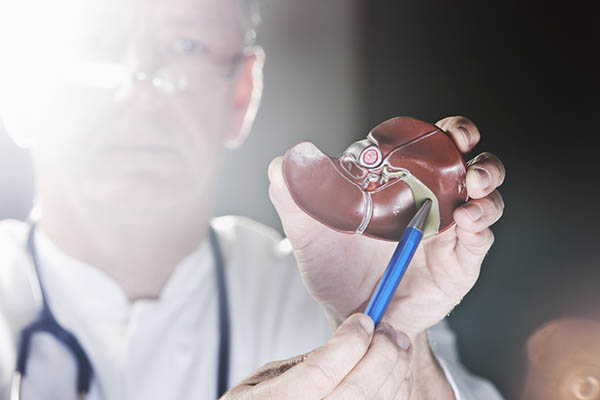Gallstones, the small, hard deposits in the gallbladder, can sometimes go unnoticed and require no treatment. However, when a gallstone lodges in a duct and causes a blockage, the resulting symptoms can be severe and may necessitate gallstone surgery. Understanding when such an intervention is necessary is crucial to prevent complications and preserve health. In the following sections, we will explore the common symptoms of problematic gallstones and discuss the circumstances under which surgery is necessary.
Gallstones: Recognizing the Symptoms and Knowing When Surgery Is Necessary
Gallstones are hardened deposits in the gallbladder that can cause significant discomfort and health issues. Understanding the symptoms is crucial for determining when surgery might be the best course of action. While some people with gallstones have no symptoms, others may experience pain in the upper right abdomen, nausea, vomiting, and fever. These symptoms usually occur when a gallstone causes blockage in the bile duct, leading to inflammation or infection.
Identifying Symptoms of Gallstones: When to Seek Medical Attention
Common symptoms of gallstones include intense pain in the upper right abdomen, back pain between the shoulder blades, nausea, and vomiting. These symptoms often occur suddenly and can vary in intensity. The pain may radiate to other body areas, such as the right shoulder or chest. It’s essential to seek medical attention if you experience these symptoms, as they can indicate a serious complication that requires immediate treatment.
Different Types of Gallstone Surgery: Exploring Your Options
When gallstones cause frequent symptoms or complications, surgery may be recommended. The most common surgery is cholecystectomy (gallbladder removal), which can be performed laparoscopically or through open surgery. In some cases, endoscopic retrograde cholangiopancreatography (ERCP) may be used to remove gallstones from the bile duct. Your doctor will discuss the best option for you based on your specific situation.
Understanding Laparoscopic Cholecystectomy: A Minimally Invasive Approach
Laparoscopic cholecystectomy involves small incisions and the use of a laparoscope to remove the gallbladder. This minimally invasive method typically offers quicker recovery and less pain than open surgery. The surgeon will make small incisions in the abdomen, insert a laparoscope (a thin tube with a camera), and remove the gallbladder through one of the incisions. This surgery usually only requires an overnight hospital stay.
Open Cholecystectomy: When It’s the Preferred Option
In some cases, an open cholecystectomy involving a larger abdominal incision may be necessary. This could be due to the size of the gallstones, previous surgeries, or complications during laparoscopic surgery. While this approach may require a longer hospital stay and recovery time, it allows for better visualization of the gallbladder and surrounding tissue, reducing the risk of complications.
Preparation for Gallstone Surgery: Steps and Considerations
Preparation for gallstone surgery includes fasting, blood tests, and, in some cases, stopping certain medications. Your surgeon will provide detailed instructions based on your specific situation. Following these instructions carefully is essential to ensure a successful surgery and recovery. It’s also crucial to discuss any concerns or questions with your surgeon before the procedure.
Recovering from Gallstone Surgery: What to Expect
Post-surgery recovery can vary depending on the type of surgery. For laparoscopic cholecystectomy, hospital stays are shorter, and recovery is quicker. Pain management and gradual return to normal activities are part of recovery. Open cholecystectomy may require a longer hospital stay and recovery time, with more focus on pain management. Your doctor will provide specific instructions for post-surgery care.
Diet and Lifestyle Changes After Gallstone Surgery
After gallbladder removal, dietary adjustments can help manage changes in digestion. A diet low in fat and fiber is often recommended, along with regular exercise and maintaining a healthy weight. It’s also essential to avoid alcohol and caffeine, as they can irritate the digestive system. Your doctor may recommend additional dietary changes based on your individual needs.
Risks and Complications Associated with Gallstone Surgery
While generally safe, gallstone surgery does carry risks, such as infection, bleeding, and anesthesia-related complications. Discussing these risks with your surgeon is important for informed decision-making. Additionally, some people may experience long-term complications such as diarrhea or bile duct injury. Following post-surgery care instructions and regular check-ups can help prevent these complications.
Long-Term Outlook After Gallstone Surgery
Most people lead a normal, healthy life after gallstone surgery. Adjusting to dietary changes may take time, but long-term complications are rare, and gallbladder removal typically resolves symptoms related to gallstones. In some cases, however, gallstones may recur. It’s essential to continue regular check-ups with your doctor and monitor for any new symptoms that may indicate a need for further treatment.



 Close
Close